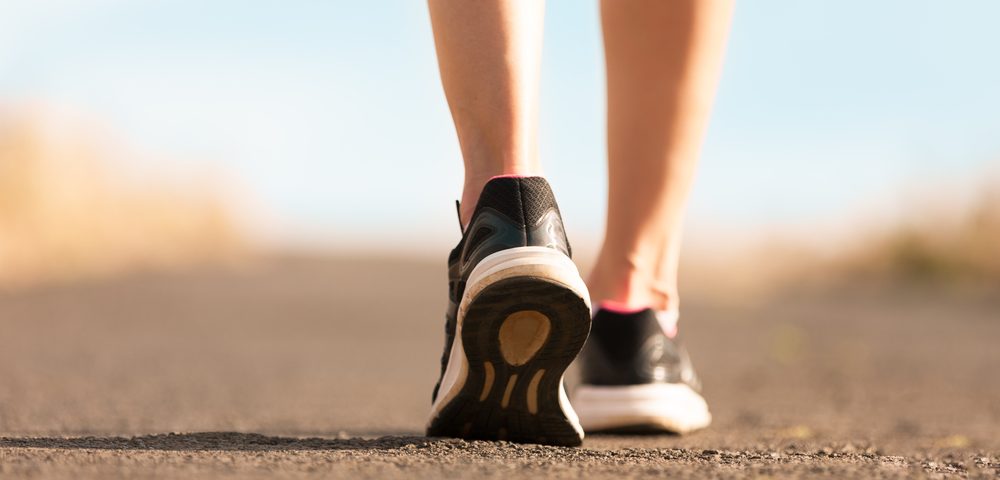Exercise with Myasthenia Gravis Is a True Test of Character
Written by |

Few activities send endorphins rushing through my body like jogging. Exercise has many benefits, both mental and physical. This fact became apparent to me when I could no longer exercise due to weak and fatigable muscles caused by myasthenia gravis (MG).
Before the onset of my symptoms, I was an avid athlete. I would jog long distances, play field hockey, and go to the gym — all in the same day. Then I would repeat the routine the next day. Whenever I felt overwhelmed by life or school, as most teenagers do occasionally, I would jog it off. Running cleared my mind and improved my mood instantly.
I started to realize my body was not functioning at its optimal level during field hockey games. I was finding it harder and harder to run, and I became terrified that the option of enjoying this activity was slowly disappearing from my world. Eventually, running became a part of my past.
Five years after my diagnosis and several MG crises later, I have begun the slow and tedious journey of trying to exercise again. As with most worthwhile things in life, this process has been extremely challenging and has left me feeling both powerless and empowered. Because I’m incredibly hard on myself, I started with a routine that was too tiring, despite warnings from my family and friends not to overexert myself. This resulted in feelings of inadequacy and a cycle of self-loathing — the opposite effect exercise once had on my self-esteem. I lost hope that I would ever be able to run again, so I stopped exercising altogether.
Then one random day, I bought myself a pair of beautiful exercise tights and regained my motivation. This time around, I began with almost humiliatingly light exercise (think geriatric level) and slowly increased the difficulty level. Some days were better than others, true to the nature of MG symptoms, and on other days I was unable to exercise at all. I accepted that this was OK.
It has been a year since my second and more realistic attempt at exercise commenced. I am still unable to jog long distances, but I can walk longer, which has significantly improved my quality of life and participation in social activities.
I sometimes still trip and fall when I go for a walk with my dog because of foot drop. Some days I can’t walk half the distance I covered in the previous session, but all of that is OK. If I have learned anything from exercise with MG, it is to be patient and kind to myself and my body. My slow, gradual improvements have given me hope. Best of all, it has resulted in some weight loss that has done wonders for my self-esteem.
I don’t believe there is a one-size-fits-all option when it comes to exercise and MG. An individualized approach and awareness of limitations are needed. Sometimes I wish I could already run, but it’s important to put my progress in perspective: Eighteen months ago, I couldn’t walk 100 meters without becoming breathless. Now, I can walk around the block with my dog, even if I’m still out of breath.
Life is beautiful. Never give up and keep fighting.
***
Myasthenia Gravis News is strictly a news and information website about the disease. It does not provide medical advice, diagnosis or treatment. This content is not intended to be a substitute for professional medical advice, diagnosis, or treatment. Always seek the advice of your physician or other qualified health provider with any questions you may have regarding a medical condition. Never disregard professional medical advice or delay in seeking it because of something you have read on this website.






Pamela Polit
This is an encouraging article. My husband Ron's MG first presented 7 1/2 years ago as the ocular variety and spontaneously went into remission at about 6 months. After 6 years relatively symptom-free, at age 85 it reappeared as generalized. Over the past year he has lost about 50% of his strength and much of his ability to do things around the house without becoming exhausted.
BACKGROUND: Ron has always loved exercising, running during his teens, throughout his 4 years in the military, & into his 30s until his knees suggested, "no more." Over time, he replaced running with swimming and modest weight training.
Now 86 years old, Ron still begins most mornings warming up on a small pedal machine followed by range-of-motion stretching, and a couple days a week some exercises on TRX suspension straps. When able, once or twice a week he will do 2 miles on a treadmill since holding on is now imperative. Some days, this level of activity is impossible.
Ron also enjoys going to the grocery store with me but always uses the carts to stabilize. Weather and season permitting, he will water the plants in our gardens. Finally, afternoon naps are now a daily requirement.
The reason I'm writing is that yesterday and today have brought on something new. Nothing seems to be working the way it usually does. He went to bed last night unusually tired and awoke still feeling fatigued - not normal. Nevertheless, he pushed through some exercises but is now paying for it. As you probably guessed by now, Ron has a great attitude about things, but today is the first day I saw tears. . .
Lindsey
Retha, Thank you for your articles. I am currently suspected of having MG and your articles are inspiring. Lindsey
Marlene thomson
I am trying to walk more every day but I find it really difficult is there any suggestions what I can do .
Ayelet Stuhl
I came across this post, after investigating if exercising is good for you! I was diagnosed with MG (and Thymoma) a few months ago. Underwent surgery last month. Just like you, I was very active before my diagnosis. I was invited last week to try the peloton bike. I actually like it! I’m afraid it will actually hurt me if I overdo it. Keep looking for data. I exercised yesterday, one beginner class for 20 min. I feel weak in my lower extremities. Is it possible I’m hurting myself???